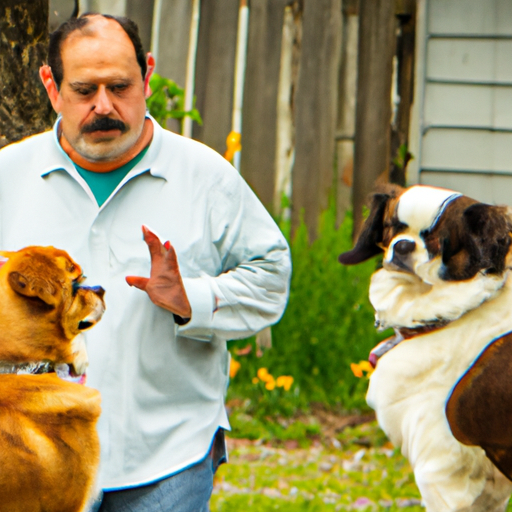“`markdown
How to Introduce Two Dogs When One is Aggressive
Understand the Root Cause of Aggression
Firstly, it’s essential to understand that your dog’s aggression isn’t a sign of an inherently bad or unlovable animal. Aggression is usually rooted in fear, anxiety, or a past trauma. It’s your responsibility as a caregiver to help them overcome these challenges.
Here are some common causes of aggression in dogs:
- Fear or anxiety
- Past trauma
- Lack of socialization
- Territorial behavior
Preparation Before the Introduction
Before introducing the two dogs, there are some steps you need to take to ensure a smooth and safe meeting:
- Know your dogs: Understand the triggers and behaviors of both dogs. This will help you anticipate potential conflicts and manage them effectively.
- Create a neutral environment: The introduction should take place in a neutral location to avoid territorial aggression.
- Have a plan: Know what you will do if aggression does occur. This might involve using a water spray, dog whistle, or other distraction methods.
The Introduction Process
The actual introduction process is crucial and should be handled with care and patience. Here’s a step-by-step guide:
- Keep the dogs separated: Initially, keep the dogs separated but within sight of each other. This allows them to get used to each other’s presence without the risk of conflict.
- Monitor their body language: Watch for signs of relaxation or tension in both dogs. If either dog appears to be getting agitated, take a break and try again later.
- Gradually decrease distance: Over time, gradually decrease the distance between the dogs. Always prioritize their comfort and safety.
- Allow controlled contact: Once both dogs seem comfortable, allow them to sniff each other under controlled conditions.
Post-Introduction Period
After the introduction, continue to monitor their interactions closely. Keep their interactions short and positive. Gradually increase the length of time they spend together.
Remember, progress might be slow, but it’s important to stay patient and consistent. Reward good behavior and avoid punishment.
Troubleshooting Aggression
Despite your best efforts, aggression might still occur. Here’s what you can do:
- Use distraction methods: A loud clap, whistle, or spray of water can interrupt aggressive behavior.
- Seek professional help: If the aggression continues, it might be time to consult a professional dog trainer or behaviorist.
| Issue | Solution |
|---|---|
| Fear aggression | Gradual exposure to the trigger |
| Territorial aggression | Establish neutral areas |
| Aggression due to past trauma | Consult a professional |
Frequently Asked Questions
Q: How long does it take for dogs to get used to each other?
A: It varies for each dog. Some might become friends immediately, while others might take weeks or even months.
Q: What should I do if my dog is aggressive towards all other dogs?
A: Consult a professional dog trainer or behaviorist. They can provide personalized advice and strategies.
Q: Can an aggressive dog ever be safe around other dogs?
A: Yes, with patience, training, and sometimes professional help, an aggressive dog can learn to behave safely around other dogs.
“`



